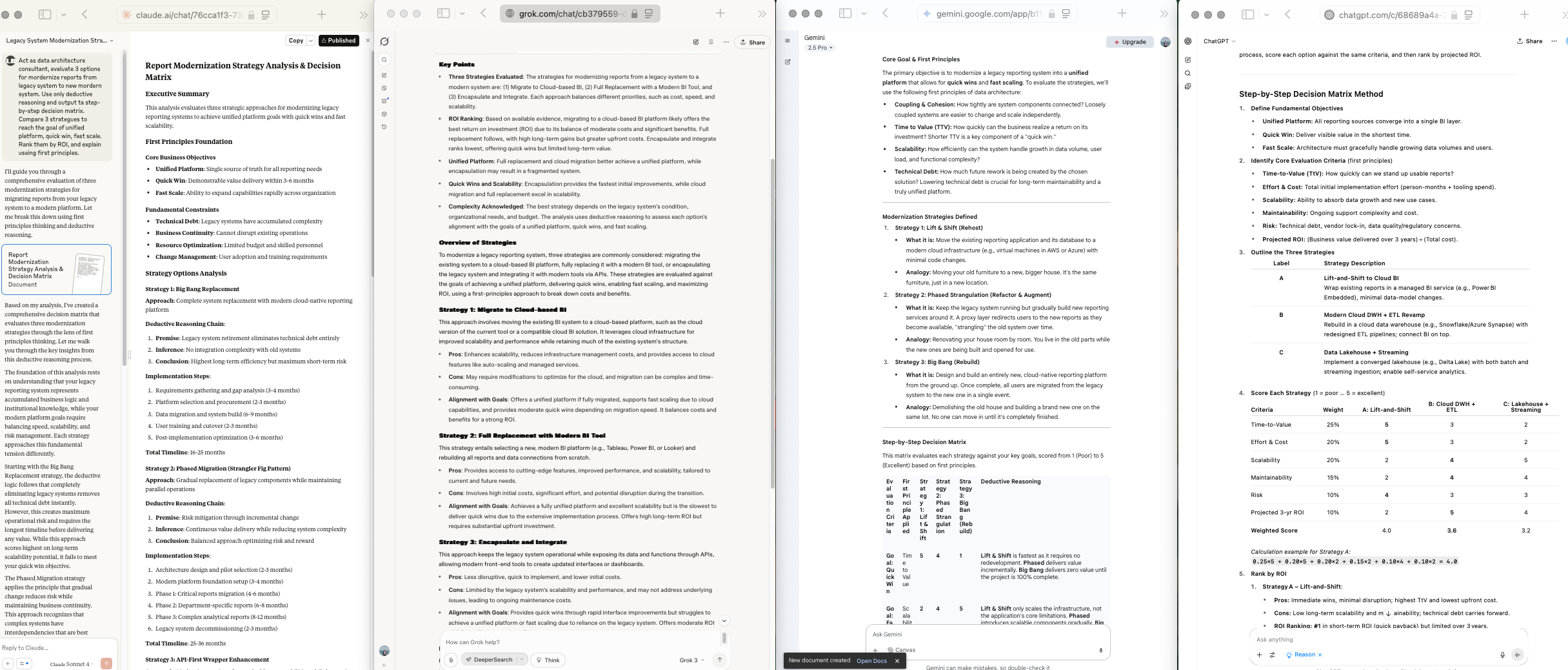Template for Prompting as Data Engineer - Mental Model Prompting as Engineer
For giving better context and knowledge sharing fro LLM
For [complex topic]:
- What falls clearly within my area of expertise?
- Where am I approaching the limits of my knowledge?
- What assumptions am I making that might be wrong?
- Where should I seek expert input instead of relying on my judgment?
The term of metal models for prompting.
Mental models are simplified representations of how the world works. They're cognitive shortcuts that help us understand complex situations, make decisions, and predict outcomes. In the context of LLM prompting, these frameworks help you structure problems more effectively, anticipate AI responses, and design prompts that leverage proven thinking patterns.
Categories of Metal Model
- Foundational thinking tools
- Problem Analysis Framework
- Decision Making Model
- Creative and Strategy thinking
- Human philosophy and behavior
- System and complexity
- Communication and influence
- Leanring andadaptation
Application
Consciously applying tese metal models provides a toolkit of proven reasoning approaches, leading to better prompt design and overall problem solving with LLMs
Example to apply LLMs with mental modeling Prompting:
Give a Role
The more specific the role, the sharper the output
- Strategy Consultant
- Logical Analyst
- Detective
- Policy Evaluator
- Researcher Synthesizer
Give reasoning tasks
Tell the model what kind of thinking to problem, by these:
- Tradeoff Analysis
- Root cause breakdown
- Ethical scenario assessment
- Heuristic decision tree
- Socratic dialogue
be explicit, then set mentral constraints to make it think rigorously
Use constraints like below:
- step by step logic
- frist principles
- compare 3 POVs before concluding
- show your reasoning trail
Output format
Format the tone of system thinker (LLM),
- be concise
- profession, no emotional language
- explanatory
Just use the R.E.A.S.O.N formula
I am a fan of simple method, some of them are REASON which along side with STAR, PDCA, etc.
- R - Role
- E - Evaluate
- A - Ask Question
- S - Simulate
- O - Output format
- N - Narrow the scope
Ex:
Act as data architecture consultant, evaluate 3 options for mordernize reports from legacy system to new mordern system. Use only deductive reasoning and output ta step-by-step decision matrix.
Compare 3 strategues to reach the goal of unified platform, quick win, fast scale. Rank them by ROI, and explain useing first principles.
Check it out with Free model.
It is not about the model. It is about the mental structure you give it.
Output:
- Gemini 2.5 Pro: https://g.co/gemini/share/c77c1daf8d20
- Claude Sonet 4.0: https://claude.ai/public/artifacts/4b04e5af-585a-448b-8b03-f66fd6fdd149
- ChatGPT: https://chatgpt.com/share/68689b69-4f84-8009-ae68-af0730839dd9
- Grok: https://grok.com/share/c2hhcmQtMg%3D%3D_92dc5f02-0b1a-4860-be08-5d9fa33e03fc

Thinking of model (shown)
Capturing the thinking of model, that’s funny :)

- ChatFPT does not shown the thinking process too much
- Gemini splits the thinking process into 3 parts, and shows the thought process
- Claude tries to explain what its response
- Grok too much, searching 52 resources, provide Chain of Thought - CoT.
Thinking of model (hidden)
I am not sure if it is actually thinking of model, additionally, these are Free Models, I am not quite sure what different it makes in Pro models.
Stay tuned for more updates.
Site affect if the context is less in term of engineering? and/or using Aton prompt
He points out that AI is known to hallucinate - to generate content that is irrelevant, made-up, or inconsistent.
Ref links
Context Engineering Metal Modeling for prompting Context engineering repo master